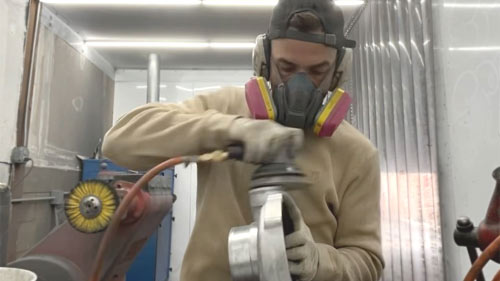 Every object that you see and use every day has a function that meets various needs. These items are the realisation of a rigorous design process. Before it was mass-produced for your usage, someone came up with the concept and thought of ways on how it can be helpful. This method is known today as a product or industrial design.
Every object that you see and use every day has a function that meets various needs. These items are the realisation of a rigorous design process. Before it was mass-produced for your usage, someone came up with the concept and thought of ways on how it can be helpful. This method is known today as a product or industrial design.
What is Industrial or Product Design?
Industrial or product design is the ideation of an object that is not yet being manufactured. It is the act of defining the potential form of the product, how it should function, and how it can be useful. What sets it apart from craft-based design is that the output of the process is intended for mass production in later stages.
Industrial design is a creative process that combines art, engineering, and business to develop a useful product that is viable for mass production. It requires diverse expertise that can be provided by a team of specialists. This team considers the functionality, production costs, and even aesthetics of the product.
What are the Steps of Product Design?
Product design is creative, but it still requires a systematic approach. The usual journey of industrial design goes through the following steps:
1. Research
Industrial designers usually start the process by consulting the clients to determine the requirements for the design of the product. This phase is where expectations are set, and goals are communicated. After this, the designers do extensive research on the potential users and the various ways that the product might be useful to them. This is important in establishing the viability of the product.
2. Sketching
Based on the client requirements and research results, a sketch or rendering of the product is made. Years ago, this was done by hand, but 3D software and computer-aided design or CAD has eliminated the need for complicated technical drawings.
3. Model Making
Making physical models allows designers to test their ideas and present them to others. Model making in industrial design has three types. First is the functional model, which provides the essential and basic characteristics of the product. It is helpful when developing innovative features during product development and testing their functionality.
Prototyping is the next category. A prototype closely resembles the end product visually and functionally. It is used to test the product before proceeding to mass production. Using this model, designers can determine whether the product is user-friendly or if the form is satisfactory. It can be used to examine the materials and determine the cost requirements for manufacturing. Evaluating product safety can also be done using the prototype.
The last type of model making is the design model. It is used for detailed presentations at product fairs and showrooms. Larger models with more details are usually made for product and trade fairs, while smaller models will suffice for client visits and consultations.
4. Product Testing
Before a new product goes to mass production, it has to undergo product testing. It is the final step of industrial design. It is done by pooling a group of representative users, asking them to evaluate the product, then making the necessary changes based on this feedback. It is also an excellent way to expose any remaining flaws and gaining additional insight that can make the product better.
With well-executed product design, you could reduce costs significantly by optimising the product materials and manufacturing process. More importantly, it ensures that you are rolling out a product that will meet customer needs consistently and safely.




